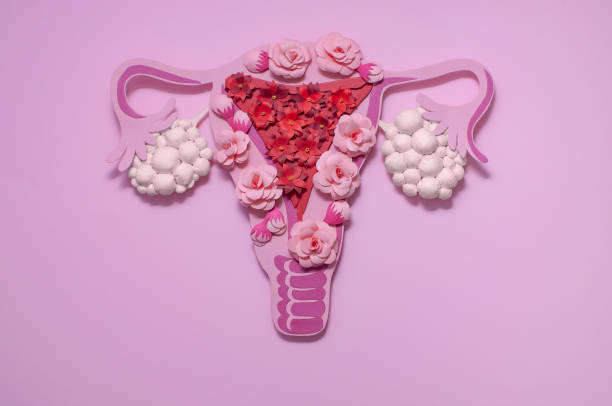Vaginal hysterectomy procedure to remove the fibroid?
[lwptoc]
What is a vaginal hysterectomy?
Vaginal hysterectomy is a surgical technique to remove the uterus, either completely or just part of it. It can also be used to remove ovaries and fallopian tubes.
This technique can also be employed to treat uterine fibroids that cause pain, bleeding or other problems. Vaginal hysterectomy is adopted to treat uterine fibroids especially if there are lots of them and are large, and there are no more plans to have children. Vaginal hysterectomy is the only definite, permanent solution for fibroids.
A vaginal hysterectomy, however, puts a complete stop to menstruation and childbearing.
Vaginal hysterectomy procedure to remove the fibroid
- The patient lies on her back, in a similar position to that of a Pap test. A urinary catheter is first inserted to empty the bladder. After which the surgical area is cleaned with a sterile solution before surgery is commenced. This may be carried out under a local or general anaesthesia.
- Incisions are made inside the vagina to be able to get to the uterus.
- Using specialized long instruments, the surgeon clamps the uterine blood vessels and separates the uterus from the connective tissue, ovaries and fallopian tubes
- Through the vaginal opening, the fibroids are removed alongside the uterus (completely or some parts).
- Absorbable stitches are then used to control any bleeding in the pelvis.
- This approach may, however, not work for very large fibroids.
After vaginal hysterectomy procedure
After a vaginal hysterectomy procedure to remove the fibroid, the patient will be moved to a recovery room for one to two hours, and possibly spend the night in the hospital. Some women are, however, able to go home on the day of the surgery.
Pain killers will also be prescribed.
Bloody vaginal discharge may also be experienced for several days up to weeks after a vaginal hysterectomy. This is normal. So there is a need to wear sanitary pads.
Vaginal hysterectomy risks
A vaginal hysterectomy procedure is considered to be fairly safe. However, as with all major surgeries, there are a couple of associated risks.
- Adverse reaction to the anaesthesia.
- Heavy bleeding and infection around the incision site.
- Injury to surrounding tissues or organs; such as the bladder, intestines and blood vessels.
- Pelvic infection or abscess.
- An abnormal connection (fistula) may develop between the bowel, bladder or ureters, and the vagina.
- Damage to structures around or close to the womb.
- Collection of blood (haematoma) inside the vagina or abdomen.
- Vaginal cuff dehiscence.
Vaginal hysterectomy recovery
Vaginal hysterectomy recovery takes around 3 to 4 weeks. After which normal activities can be resumed.
FAQs
What is a uterine fibroid?
Uterine fibroids are non-cancerous growths that develop in the muscular wall of the uterus. They often cause persistent bleeding, anaemia, pelvic pain or bladder pressure.
How do I recognise uterine fibroids?
The following are likely uterine fibroids symptoms:
- Heavy and elongated menstrual bleeding.
- Painful menstrual periods.
- Pressure and pain in the abdominal region and the lower back.
- Bloated and swollen abdomen.
- Frequent urination.
- Constipation.
- Painful intercourse.
What are the categories of uterine fibroids?
Fibroids usually develop from the thick wall of the uterus and are categorized based on where they develop:
- Intramural fibroids: Develop within the middle and thickest layer of the uterus known as the myometrium.
- Subserosal fibroids: Develop from the thin outer fibrous layer of the uterus known as the serosa. Subserosal fibroids may appear either as stalk-like or broad-based.
- Submucosal fibroids: Develop from the uterine wall towards, and into, the inner lining of the uterus known as the endometrium. Submucosal fibroids may also be either stalk-like or broad-based.
What are the risk factors for uterine fibroids?
Some of the factors that may contribute to the development of a uterine fibroids are:
- Age: Uterine fibroids are mostly common in women in their 30s through to early 50s.
- Race and Ethnicity: Uterine fibroids are more common in African American women than white women, with more severe symptoms.
- Family History: Family history of uterine fibroids, such as having a mother or sister who previously had fibroids, may increase the risk of developing uterine fibroids.
- Other Possible Risk Factors are obesity, high blood pressure and low vitamin D levels.
Are There Any Complications From Uterine Fibroids?
Uterine fibroids may lead to a number of complications.
- Effect on Fertility: Uterine fibroids may negatively affect a woman’s chances of being a mother. However, its effect on a woman’s fertility is quite small.
- Effect on Pregnancy: Uterine fibroids may significantly increase pregnancy complications and delivery risks. Such as, preterm birth, miscarriage, placenta previa (placenta covering the cervix), postpartum haemorrhage (excessive bleeding after giving birth), anaemia and breech presentation (that is, the baby enters the birth canal upside down with the feet or the buttocks emerging first).
- Urinary and Bowel Problems: Uterine fibroids can press and squeeze the bladder, thereby leading to constipation, frequent need for urination, urinary tract infections, urinary retention, urinary tract obstruction and kidney damage.
The information provided in this blog is for educational purposes only and should not be considered as medical advice. It is not intended to replace professional medical consultation, diagnosis, or treatment. Always consult with a qualified healthcare provider before making any decisions regarding your health. Read more







